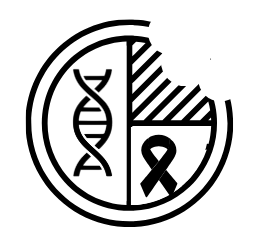Reading time: 4 minutes
Eoghan McGrath
As a younger man peering across the kitchen table at my father’s scalp, I wondered if I was catching a glimpse of my own follicular future in its shiny freckled portents. Well, a decade, a degree in genetics, and a PhD in biochemistry later, I see my own scalp peeking through an increasingly sparse covering from the bathroom mirror. But why did this happen and how does it impact my risk of diseases like cancer?
Male pattern baldness (MPB) is associated with greater risk of skin cancer, though the reasons behind this are not fully understood1.
The relationship between testosterone, MPB, and skin cancers is complicated, but it is precisely the puzzle that researchers at the Population Health Department, QIMR Berghofer Medical Research Institute, Herston, QLD, Australia, have worked to untangle2.
The corresponding author of the study is bald by the way, so he’s well placed to address this issue.
Correlation or Causation?
MPB, also known as androgenic alopecia, is caused by dysregulation of a family of hormones called androgens, of which testosterone is the best known. Testosterone levels are elevated in individuals with MPB, but are also linked to increased risk of developing skin cancers such as melanoma3.
Is testosterone causing melanoma or is it something else? Does balding really have anything to do with it?
How did they figure it out?
Mendelian Methods
To answer the question, researchers employed a technique called mendelian randomization which allows them to distinguish between environmental and genetic effects to better understand causal factors behind diseases such as cancer4. This method is based on the fact that we inherit one copy of each gene randomly from our parents in a way that is not affected by our environment. This allows for differences in environment to be teased apart from genetic factors.
Central to their investigation were two datasets with genomic and health data for hundreds of thousands of individuals. One is based in the UK while the other is based in Australia.
Straight to the Point
To begin, the researchers compared levels of testosterone with skin cancer susceptibility. They found no correlation between these two factors, suggesting that high testosterone alone does not make an individual more likely to develop skin cancer.
So what’s going on then? Are environmental effects at play? Are certain populations within these cohorts more susceptible than others?
Location Location Location
In Australia, men are more likely to be diagnosed with melanoma than women, a phenomenon that is not present to the same extent in the UK5. These sex differences in melanoma incidence have been the basis for claims that sex hormones play a role in melanoma risk. However, the researchers had just found no correlation between testosterone and skin cancer, thus they needed to think of other factors which may be causing the effect.
The researchers looked for mutations that affect MPB but may also affect skin cancer risk through other mechanisms. They found MPB-linked genetic variants affecting skin pigmentation including genes that govern skin color and ease of skin tanning – characteristics also associated with skin cancers. This added a layer of complexity to the researchers’ hypothesis, but association with pigmentation and skin color could not account for the full association between MPB and melanoma risk.
Next the researchers looked at melanoma risk for specific body locations rather than geographical locations. In both cohorts they found a significant association between MPB associated genetic variants and melanoma but only for head and neck cancer. This strongly suggests that MPB is linked to skin cancers because of pigmentation and reduced hair coverage on the scalp and not because of androgens like testosterone.
Conclusion
Traits such as MBP and cancer risk are contingent on a variety of genetic and environmental factors. As such, determining full causal relationships between variables is a very difficult task. Despite these difficulties which are inherent to this type of research, the researchers have provided us with a deeper understanding of how testosterone, MBP, and skin cancer are connected. Biases in available datasets, such as faster reporting of melanoma on certain body sites can also confound results and were mentioned as study limitations by the authors.
As a balding man, these results are welcome. Testosterone may be causing my baldness, but it is not directly increasing my skin cancer risk. I will, however, be buying a hat.
Edited by Rachel Cherney
References


Leave a comment